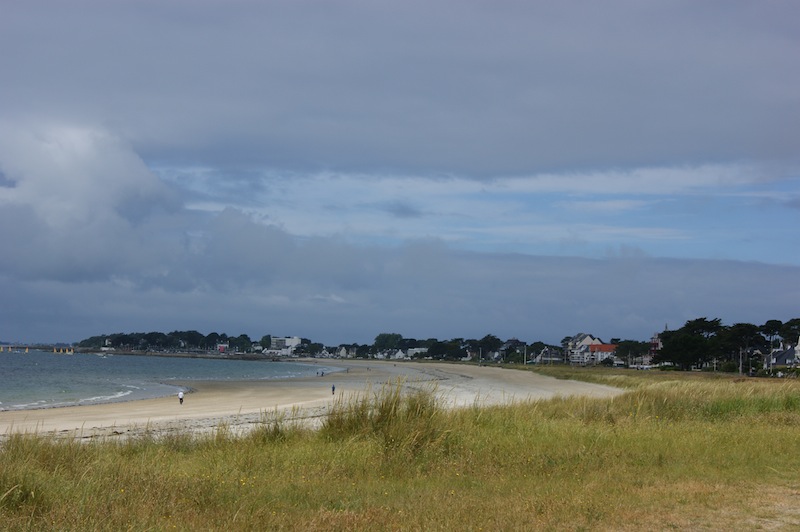I’m sure the beach at Carnac is one of the best in Brittany. Long and sandy, protected by dunes, overlooked by some handsome homes and towering trees, it promises much.
But during our June stay it rained, and rained again. And when it didn’t rain, the wind blew and the clouds blocked out the sun. Only on one day did the sun shine, and we were elsewhere. Typical.
Carnac is a bit schizophrenic. There’s the village known as Carnac Plage by the sea (the hint is in the name), and then Carnac-Ville further inland. The latter has a nice square and a few historic touches, the former has a fair number of moneyed folk judging by the houses.
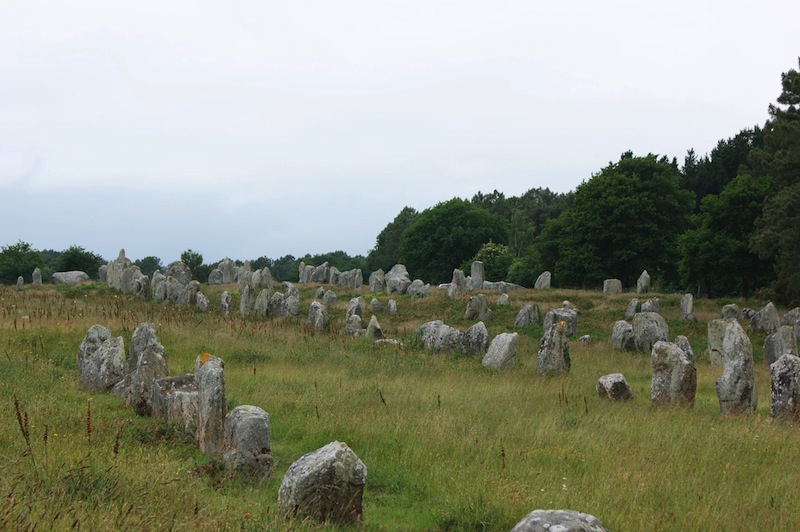
Money or not, just off the beach there’s a street lined with average bars, cafes and tacky souvenir shops selling the beach tat you find in most seaside places around the world. But during our stay we found some excellent restaurants in streets nearby.
Carnac is best known for its neolithic stones – armies of them that stretch for kilometre after kilometre alongside ancient dolmens and tumuli. The stone circles at Avebury and Stonehenge in Wiltshire look mere playthings compared to Carnac’s otherworldly alignments.
They stand to the north of the main village so we walked into town, through attractive and well-tended backstreets, cloud hovering and threatening yet more rain, arriving at a visitor centre that could’ve done a better job of telling the story. It does have a low-level viewing point, however, and from there we could see the menhirs marching off into the distance.
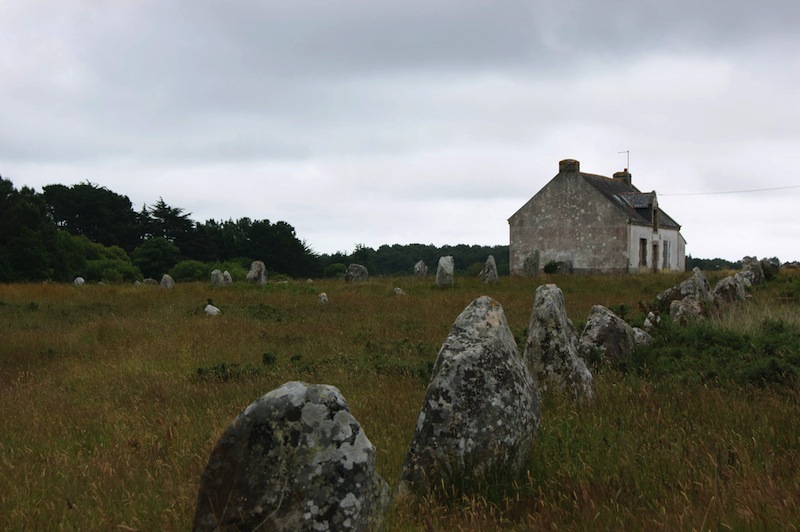
The stones, of varying sizes, are divided up into several groups or fields – Menec, Kerlescan and Kermario, the latter being the biggest. Some groups are more impressive than others, largely owing to the size of the stones, and we followed the footpaths for a few miles to get a good view, all of the time wondering what on earth had prompted our distant ancestors to go to the bother of erecting them in the first place.
As with Stonehenge, nobody really knows the answer but around 3000 and 4000 BC the locals certainly got a real urge. Was it something to do with worship of the sun, a form of temple? Were they meant to be defensive? A warning to rival peoples that this community was not to be messed with? One local myth linked to the Celtic Arthurian legends and clearly too late to be real has it that the wizard Merlin turned a passing Roman legion into stone.
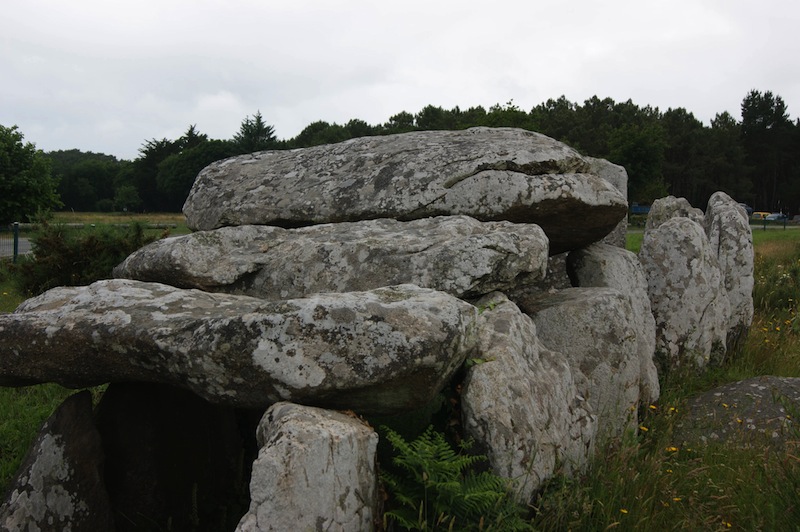
We ended up at the Tumuli St Michel, an artificial burial mound, still pondering the meaning of it all. In a world where we know so much about everything, where there’s an answer a click away on Google, it’s a bit odd to be in the middle of something so remarkable and to be so ignorant of the true purpose behind it. We stopped for a drink in a little cafe and shop that’s stuck out in the middle of the stones.
Brittany, like Cornwall, Wales, Ireland and Scotland, has many such stone monuments stretching back thousands of years, and many eerie places steeped in myth. On another day we visited Locmariaquer megaliths, another of those famous sites, although somewhat more compact.
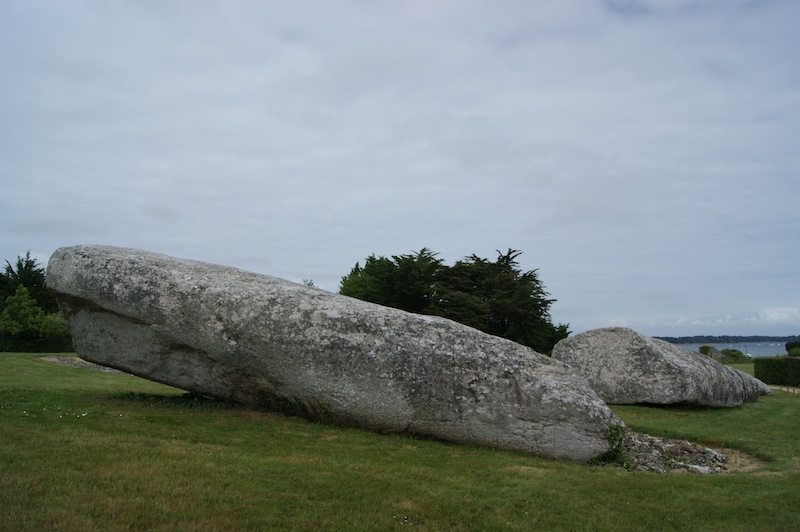
It boasts a 20-metre toppled and broken menhir, and the Table des Marchand, a large dolmen with a number of decorations. We walked inside this much excavated monument, and then back out again. Because there’s not a huge amount to do.
By this time the sun was shining and we could finally appreciate the Gulf of Morbihan in all its glory – a fine landscape of sandy beaches and dunes, handsome villages, inlets and promontories.
It’s easy to see why those neolithic folk settled round these parts…

